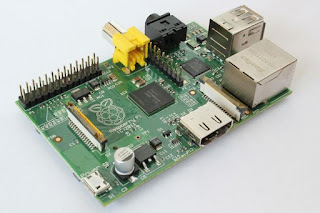Cross compilation for broadband routers
Lately,
I'm interested to know what we can do with broadband devices
or home stations that ISPs install in our
houses and what kind of traffic we have inside our
houses because if I could sniff
my neighbour's FTTH, everybody
could do it. These thought, about analyzing broadband devices,
come from two or three years ago when I wanted to install
applications and services in an ONT manufactured by ZTE. However,
those years were vivid and exhausted
because I was learning english, thinking and writing for the ISACA
Challenge, writing in this blog,
studying for ISACA
certifications and working as well, thus I didn't have enough time to think about it,
but this year is being more relaxing and from time to time I go back
to think about this field, home networks.
Most
Cisco routers, ZTE routers, Huawei routers, Alcatel-Lucent routers,
etc work with small embedded operating systems with
a set of Unix tools which come from the Busybox software package.
These devices usually have very limited
resources and they are made with MIPS microprocessors which are based
on a System On a Chip (SoC) because CPU is integrated with memory,
ethernet NICs, wireless interface, PCI, USB, etc.
 |
| MIPS devices |
It's
interesting to know the large number of protocols that ISPs
use to maintain, configure
and deploy automatically devices inside our
homes, like TR-069 which is used for instance to deploy the ISP
configuration from Auto Configuration Servers (ACS) to the end-user
devices like routers or VoIP phones. TR-069
was published by the Broadband Forum and entitled as the CPE WAN
Management Protocol (CWMP).
 |
| TR-069 Family of Remote Management Specifications |
Once
we know that most broadband devices have MIPS CPUs, if we have
developed an application or service and we want to run it in the
embedded operating system, we have to compile it in the MIPS
architecture. The
steps to make cross compilation in a Ubuntu laptop for
MIPS architectures are the next:
Add
the next line to the repositories:
- deb http://www.emdebian.org/debian/ squeeze main
Run
the next:
- dpkg -i libgmp3c2_4.3.2+dfsg-1_amd64.deb
- apt-get update
- apt-get install emdebian-archive-keyring
- apt-get install linux-libc-dev-mips-cross libc6-mips-cross libc6-dev-mips-cross binutils-mips-linux-gnu gcc-4.4-mips-linux-gnu g++-4.4-mips-linux-gnu
Our
development platform is ready, then we write the application and
compile it.
 |
| Developing and compiling |
Finally,
we have seen that the Hello World application fails in my machine,
that is normal because my laptop has
not a MIPS
architecture. We'll see in a Huawei router:
 |
| Application "Hello World" for MIPS architecture |
Ooooh
…. it isn't work either, I have to study and test more, we'll see
in next posts.
Regards my
friends and remember, test your thought and test whatever you are
thinking.










Commentaires
Enregistrer un commentaire